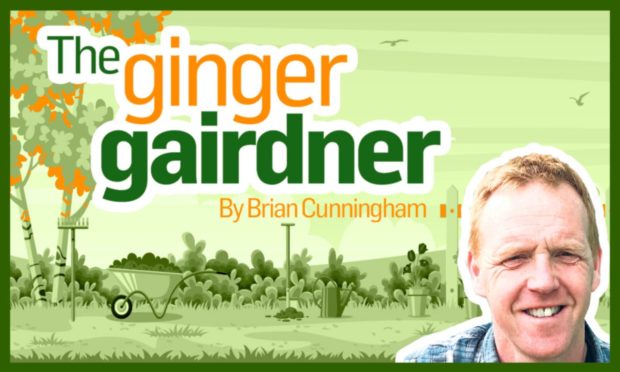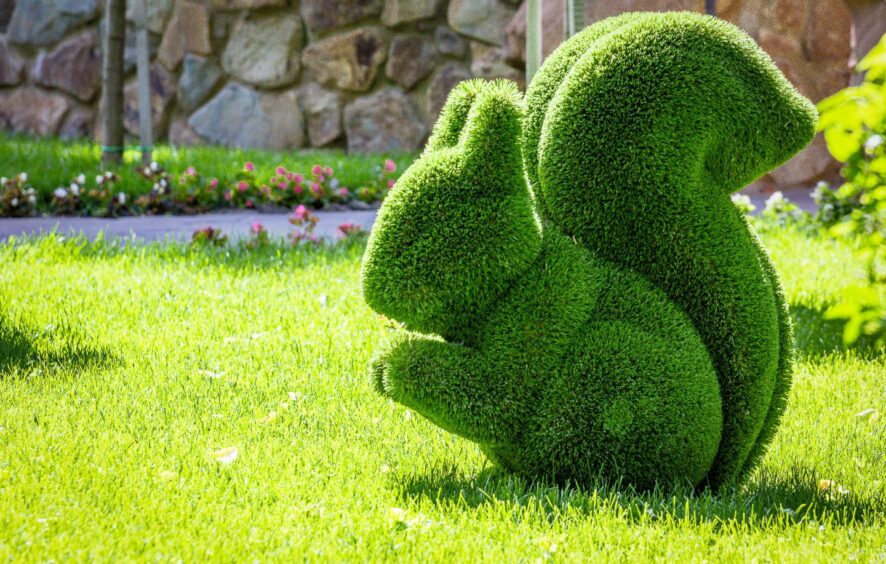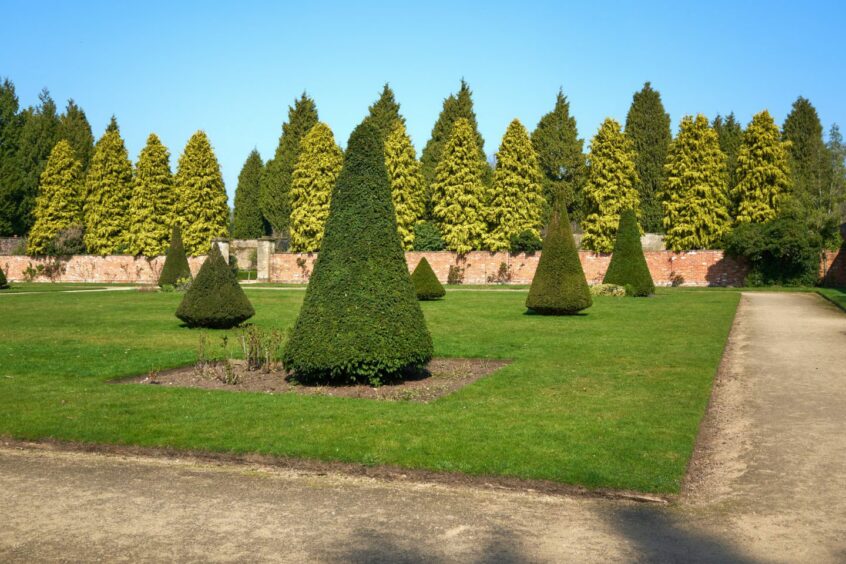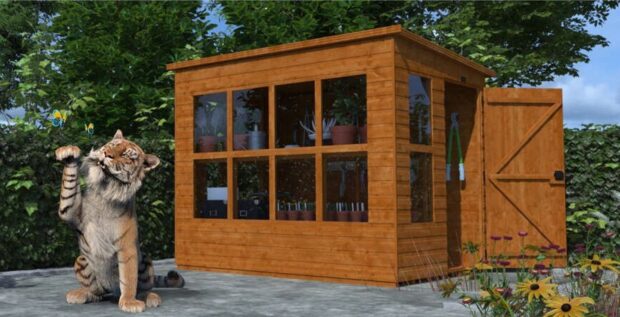I’m gutted, it was World Naked Gardening Day last week there and I missed it!
I quite like these celebrations designed to raise our awareness but I’m not convinced about that one. I’m sure the thought of me taking part has probably put you off as well.
I think if I was ever to join in I would need to plan what job I was going to do in the garden very carefully. Certainly not a day to be dead-heading the roses.
Kiss a Ginger Day perhaps?
There are lots events like this in the gardening calendar these days, which is no bad thing as it focuses our attention – National Children’s Gardening Week, National Tree Week, Kiss a Ginger Day (I thought I’d try and sneak that one in).
A recent addition I particularly like is World Topiary Day that took place this week.
Topiary is the art of clipping trees and shrubs into ornamental shapes which has been a feature of garden design since the times of the Romans.
Previously I would’ve associated topiary with the grand gardens of the large country houses- archways, obelisks, extravagant pieces of animals, cake stands and other fantasy pieces.
Equally, simpler pieces of Box trimmed as a balls or pyramids can also bring touches of class and style to our own humble gardens at home.
It fascinates me how plants can be advanced beyond their already beautiful forms, being manipulated to create these simple and unusual shapes that add so much to a garden.
These works of art bring interest all year round, showing their true value in winter when all else around them is bare and resting for the winter.
The average garden may feature the odd topiary piece or two but there is one in the north east of Fife that embraced the fashion for this style of gardening.
In the 1890’s, architect Robert Lorimer undertook the restoration of Earlshall Castle.
He was no fan of the trend at the time of bringing properties such as this in to the Victorian style.
Instead he restored the derelict castle back to life whilst keeping its original structure and character.
A garden to complement
This was in keeping to the work he carried out further down the coast near Crail on his own family home at Kellie Castle, now a property under the care of the National Trust for Scotland.
Lorimer’s talents saw him skilfully design a garden to reflect and complement the castle with a veg plot, rose terrace, secret garden, orchard and herbaceous borders.
These ‘rooms’ were divided by hedges of clipped yew and holly with the main feature being the ‘topiary lawn’ surely the finest in our country and for which the castle is best known today.
Thirty-six yew trees transplanted from Edinburgh at cost, planted in the form of four saltires which over the years have then been clipped into fanciful shapes, matching the curves and straight lines in the different sections of the castle.
In theory it’s such an simple idea that works amazingly well adding, something special and unique to the castle and gardens.
It is yet another example of the wealth of the stunning Scottish gardens we are privileged to have.
Open twice a year
The castle gardens, under the expert care and guidance of Nicky Macintyre, open two times a year under Scotland’s Gardens Scheme and I couldn’t recommend a visit enough.
Be careful though, as she might just hand you a pair of hand shears and ask you to do some hedge clipping whilst you’re there.
Keeping evergreens in check
Despite our best efforts to keep evergreen hedges and shrubs within the space we wish them to grow, there are times when they do become overgrown or out of control, requiring what feels like drastic action to get them back in check.
I have a lovely evergreen shrub Osmanthus delavayi which in early spring has fragrant, white flowers.
This is a great plant which can either be part a mixed border or proudly grown as a specimen,
I’ve even started trimming them to create little topiary balls that flank either side of an entrance to a path.
The problem plant
The plant I refer to, however, was planted too close to a path for it’s ultimate height and width of around 3m and has now become overgrown, blocking the way.
If I just cut it back from the path it’s going to leave an ugly hole, making the plant look one-sided and a bit daft, plus the re-growth will give me the same issue a few more years down the line.
Now that I’ve enjoyed the early spring flowers it’s time to give it some tough love by cutting the whole plant down to around 60cm from the ground.
Mid-spring window
This mid-spring window we are coming into is an ideal time to carry out this task taking advantage of the period when the plants are full of energy and keen to throw out lots of new growth.
There is a leap of faith here, so not letting the plant dry out during this rejuvenating period is important.
This is why I will give it a good soaking before applying a layer of mulch, around 7cm thick around the base of the plant, which will help to conserve moisture.













